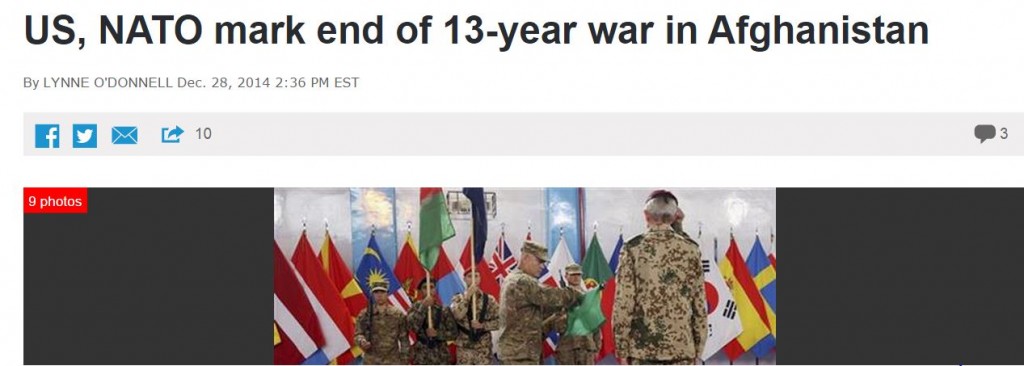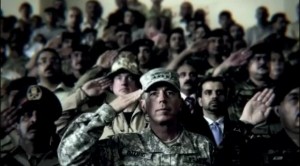No, the War in Afghanistan Did Not End
Yesterday afternoon, an AP article proudly announced to us that the war in Afghanistan has ended:

Unfortunately, the AP headline is total bullshit. There was indeed a ceremony in Kabul yesterday. And yes, it did mark (for the second time), the end of the international force called ISAF (International Security Assistance Force) assembled under NATO as the lead in the war in Afghanistan. The new NATO mission, dubbed Operation Resolute Support, also under NATO leadership, is proclaimed most often to consist only of training and support to Afghan forces who will do all the fighting.
The problem with that description is that it is a lie. Just over a month ago, Barack Obama “secretly” expanded the role of US troops remaining in Afghanistan:
President Obama decided in recent weeks to authorize a more expansive mission for the military in Afghanistan in 2015 than originally planned, a move that ensures American troops will have a direct role in fighting in the war-ravaged country for at least another year.
Mr. Obama’s order allows American forces to carry out missions against the Taliban and other militant groups threatening American troops or the Afghan government, a broader mission than the president described to the public earlier this year, according to several administration, military and congressional officials with knowledge of the decision. The new authorization also allows American jets, bombers and drones to support Afghan troops on combat missions.
In an announcement in the White House Rose Garden in May, Mr. Obama said that the American military would have no combat role in Afghanistan next year, and that the missions for the 9,800 troops remaining in the country would be limited to training Afghan forces and to hunting the “remnants of Al Qaeda.”
The decision to change that mission was the result of a lengthy and heated debate that laid bare the tension inside the Obama administration between two often-competing imperatives: the promise Mr. Obama made to end the war in Afghanistan, versus the demands of the Pentagon that American troops be able to successfully fulfill their remaining missions in the country.
But to AP, the only message worthy of being in their headline and lede paragraph is that the war has ended:
The war in Afghanistan, fought for 13 bloody years and still raging, came to a formal end Sunday with a quiet flag-lowering ceremony in Kabul that marked the transition of the fighting from U.S.-led combat troops to the country’s own security forces.
The reader has to hang in there for another dozen paragraphs or so before reaching the admission of the expanded role of US troops and the reason for that expansion:
Obama recently expanded the role of U.S. forces remaining in the country, allowing them to extend their counter-terrorism operations to the Taliban, as well as al-Qaida, and to provide ground and air support for Afghan forces when necessary for at least the next two years.
In a tacit recognition that international military support is still essential for Afghan forces, national security adviser Mohammad Hanif Atmar told the gathered ISAF leaders: “We need your help to build the systems necessary to ensure the long-term sustainability of the critical capabilities of our forces.”
More than ten years after starting our “training” mission, Afghan troops remain unable to defend the country on their own and must rely on US troops.
Of course, the military knows that they have this expanded role. Here is the video the military provided on the transition ceremony:
Note that at around 38 seconds, the narrator says “combat by American forces on counterterrorism operations will continue”. You can bet they will.
Oh, and for a righteous rant on this whole charade, scroll back to yesterday on James Risen’s Twitter feed.



